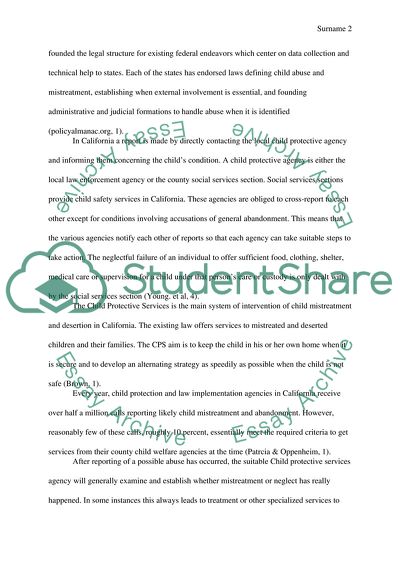Cite this document
(Child Protective Services Case Study Example | Topics and Well Written Essays - 1750 words - 1, n.d.)
Child Protective Services Case Study Example | Topics and Well Written Essays - 1750 words - 1. https://studentshare.org/psychology/1748095-does-child-protective-services-protect-children-from-child-abuse
Child Protective Services Case Study Example | Topics and Well Written Essays - 1750 words - 1. https://studentshare.org/psychology/1748095-does-child-protective-services-protect-children-from-child-abuse
(Child Protective Services Case Study Example | Topics and Well Written Essays - 1750 Words - 1)
Child Protective Services Case Study Example | Topics and Well Written Essays - 1750 Words - 1. https://studentshare.org/psychology/1748095-does-child-protective-services-protect-children-from-child-abuse.
Child Protective Services Case Study Example | Topics and Well Written Essays - 1750 Words - 1. https://studentshare.org/psychology/1748095-does-child-protective-services-protect-children-from-child-abuse.
“Child Protective Services Case Study Example | Topics and Well Written Essays - 1750 Words - 1”. https://studentshare.org/psychology/1748095-does-child-protective-services-protect-children-from-child-abuse.


